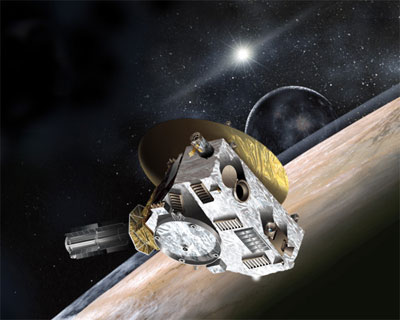The spacecraft is scheduled to take off in January 2006 and reach Pluto nine years later

The first spacecraft to explore Pluto, the last planet in our solar system, arrived at the Goddard Space Flight Center in Greenbelt, Maryland, for a series of pre-launch tests. "We are especially proud to welcome the NASA spacecraft as it arrives at Goddard as the first stop on its journey to the last planet," said Dr. Ed Weiler, director of the Goddard Center. "The New Horizons mission to Pluto is a historic journey of discovery and is designed to unlock the secrets of a mysterious planet so far away that the sun is only visible as a bright star in the sky.
The spacecraft will stay at Goddard for the next three months, when the crew members will check the balance of the spacecraft and its suitability to the requirements in spin tests, placing it in front of speakers the size of an entire wall that will simulate the noise vibrations during the launch, and sealing it for several weeks in a vacuum chamber to simulate the cold and airless conditions in space. After leaving Goddard in the fall, the spacecraft will make its way to the Kennedy Space Center for final preparations for launch.
New Horizons is the first mission to Pluto and its moon Charon. As part of the extended mission, the spacecraft will move inward toward the Kuiper Belt to investigate at least one or more of those world species in the distant region.
New Horizons will be launched in January 2006 from the Cape Canaveral Air Force Station on a Lockheed-Martin Atlas 5 rocket. New Horizons will begin a five-month orbit of the Pluto-Charon system in the summer of 2015.
New Horizons carries with it a complete set of scientific instruments. One of the instruments, Ralph, is designed to take high-resolution, color photographs of the surface to produce detailed maps of Pluto and Charon. The instrument has two separate channels - an MVIC visible light multispectral camera and a Linear Etalon Imaging Spectral Array (LEISA). A single 6 cm diameter telescope will collect and focus the visible light using both channels. The LIESA instrument will be used to map the distribution of methane, liquid nitrogen, carbon monoxide and water ice on the surface of Pluto, and the distribution of water ice on the surface of Charon.
To the project site
to a NASA press release as quoted on the Universe Today website
He knew the edge of the solar system
https://www.hayadan.org.il/images/content1/187735172-L-2005-0613horizons-lg.jpg
